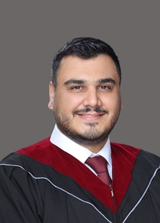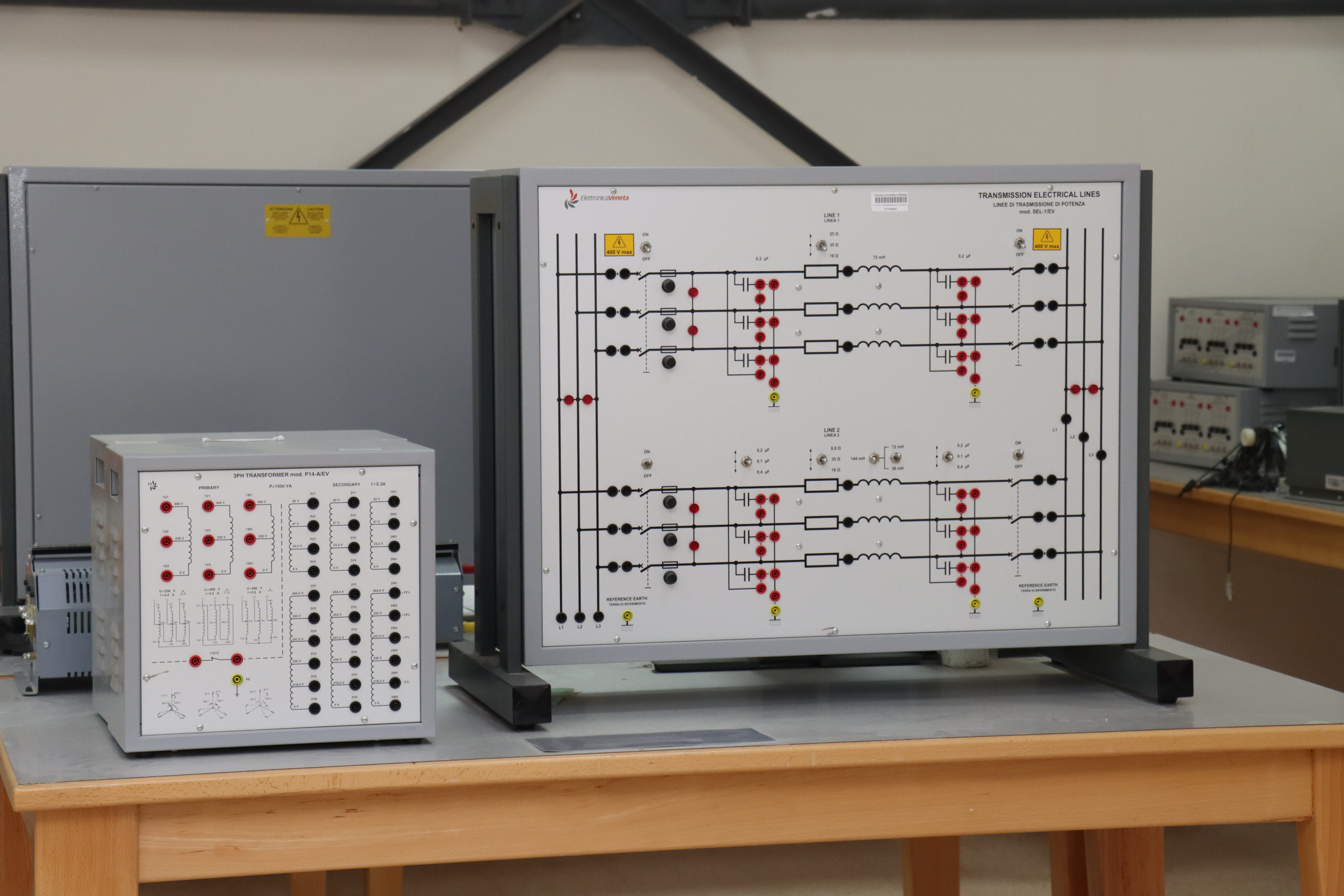About Faculty
Information about the faculty, its vision, and mission.

To become a pioneer faculty known for its holistic engineering educational system integrated with advanced technologies to serve communities for a better future.

To empower talented students with robust engineering education and competencies through hands-on experiences and skills intertwined with interdisciplinary knowledge, technology and industry partnerships.
Dean’s Welcome
Welcome message from the Dean.
Academic Departments
Information about various academic departments.
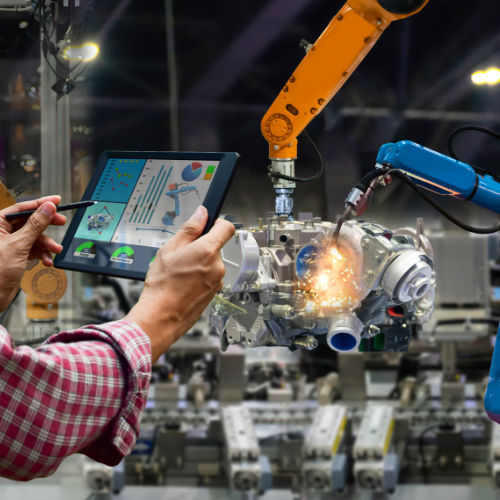
Intelligent Robotics Systems Engineering
Intelligent Robotics Systems Engineering emphasizes the joint application of Artificial Intelligence, Robotics, Internet of Things and Smart Systems into engineering. Thr...
- 160 Credit Hours
- 80 % Minimum Accepted Grade
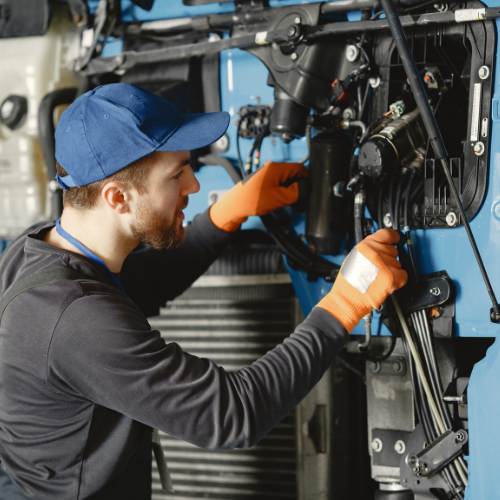
Mechanical Engineering
Mechanical Engineering acts as one of the most crucial pillars of modern society. Through the Mechanical Engineering program at AUM, students will learn to hone in...
- 164 Credit Hours
- 80 % Minimum Accepted Grade

Civil Engineering (Ceased Enrollment)
Civil Engineering is the driving force behind the infrastructural design, development and operation of our communities. Students will be guided through major aspect...
- 164 Credit Hours
- 80 % Minimum Accepted Grade
Faculty Members & Staff
List and information about faculty members and staff.
Dean of Faculty of Engineering
Civil Engineering (Ceased Enrollment)
Intelligent Robotics Systems Engineering
Mechanical Engineering
Executive Board
Details about the executive board members.
Facilities & Labs
Information about the facilities and laboratories.
SA-G21: Electrical Machines for Mechanical Engineers Lab
| Laboratory name | Apparatus | Brief Description of the lab. |
|
Electrical Machines for Mechanical Engineers Lab |
|
A set of experiments is performed to cover Electrical Circuit and Machine subjects, including DC machines: construction, classifications, and performance equations of generators and motors; Synchronous machines: construction, generator and motor operations; and three-phase induction motors: construction, operation, performance calculations, starting, and speed control. |
-
List of Experiments:
- Introduction to Laboratory Test and Measurement equipment.
- AC circuit analysis and measurements.
- DC Circuits Analysis and measurements.
- Operational Amplifier applications.
- Linear Motor.
- DC Motor with shunted Excitation.
- Series DC Motor.
- 3-Phase Induction Motor.
- DC Generator.
xx-xx: Automatic Control Lab
| Laboratory name | Apparatus | Brief Description of the lab. |
|
Automatic Control Lab
|
|
Linear measurements callipers and micrometre, Thermocouples in series and parallel, strain gauges, solar radiation measurement, level and flow control, linear variable differential transformer, temperature control, motor position and speed control using PID controller, Uncertainty analysis.
|
- List of Experiments:
- Automatic Control of Speed &Position Experiment.
- Automatic Control of Level. Experiment.
- Automatic Control of Temperature Experiment.
EL: Fluid Lab
| Laboratory name | Apparatus | Brief Description of the lab. |
|
Fluid Lab
|
|
A set of experiments is performed to evaluate fluid properties, the centre of pressure in immersed bodies, flow measurements, drag forces, and head loss in pipes, impulse turbines, and water jets.
|
- List of Experiments:
- Measurements of liquids density, Specific gravity and viscosity.
- Calibration of Venturi, Orifice and Rota meters.
- Major Head Losses-Smooth pipes.
- Minor Head Losses-Pipes' fittings (Bends and valves)
- Impact of Jet.
- Centrifugal Pump.
- Characteristics (Single Pump).
- Centrifugal Pump.
- Characteristics (Two Pumps in parallel and series).
- Pressure distribution around circular Cylinder Bodies.
- Drag Force Measurements.
- Wake Traverse.
- Center of Pressure.




EL, SA-G21: Engineering Measurement and Control Lab
| Laboratory name | Apparatus | Brief Description of the lab. |
|
Engineering Measurement and Control Lab |
|
Linear measurements callipers and micrometre, Thermocouples in series and in parallel, strain gauges, solar radiation measurement, level and flow control, linear variable differential transformer, temperature control, motor position and speed control using PID controller, Uncertainty analysis.
|
- List of Experiments:
- Linear Measurement.
- Thermocouples and Circuit Resistance.
- Thermocouples in Series and Parallel.
- Rubber in Shear.
- Strain Measurement for Structures.
- Radiation Measurement.
- Speed & Position Control.
- Temperature Control.
- Level and Flow Control.

EL: Thermal Lab
| Laboratory name | Apparatus | Brief Description of the lab. |
|
Thermal Lab |
|
A set of experiments is performed to cover heat transfer and thermodynamic subjects including water boiling and condensation, thermal conductivity, natural convection, forced convection, calorific value, heat exchangers, heat pump and air coolers, and radiation heat transfer. |
- List of Experiments:
- Combination Convection-Radiation.
- Measurement of Heat


SA-G08: Mechanics of Materials lab
| Laboratory name | Apparatus | Brief Description of the lab. |
|
Mechanics of Materials lab |
|
Introduction to mechanics of deformable bodies, concepts of stress and strain, classification of materials behaviour, stress-strain relations and generalized Hook's law, applications to engineering problems involving members under axial loads, torsion of circular rods and tubes, bending and shear stresses in beams, combined stresses in beams, transformations of stresses, buckling and deflection in beams by the double integral method. |


EL: Vibration Lab
| Laboratory name | Apparatus | Brief Description of the lab. |
|
Vibration Lab |
|
Static and dynamic balancing, system response and performance, simple and compound pendulum, Center of Percussion, mass-spring systems, torsional oscillations, free and damped vibration.
|
EL: Manufacturing Lab
| Laboratory name | Apparatus | Brief Description of the lab. |
|
Manufacturing Lab |
|
Students are asked to perform experiments in the field of material science and the manufacturing process.
|


SA-G25 & EL-G01: Electrical Circuits Lab
The Electrical Circuits Laboratory provides hands-on experience in DC and AC circuit analysis, including Kirchhoff’s laws, Thevenin’s and Norton’s theorems, transient responses, and three-phase systems. It also covers two-port networks and electrical machines, focusing on the construction, operation, and performance of DC machines, synchronous machines, and induction motors. This lab bridges theory and practice, preparing students for real-world engineering applications.
SA-G25: Electronics Lab
The Electronics Laboratory focuses on practical applications of diodes, including clippers, full-wave and half-wave rectifiers, clampers, and voltage multipliers. It also covers DC and AC analysis of BJT transistors in various configurations (common base, common emitter, and common collector) and JFET DC analysis. Additionally, the lab introduces students to operational amplifiers (Op-Amps), providing a foundation for advanced circuit design and analysis.
SA-G25: Embedded Systems lab
The Embedded Systems lab focuses on the design and implementation of several interfacing tasks; Interfacing with simple I/O devices like switches, LED, and analog sensors, and communicating with sensor modules with various communication protocols by using Arduino development boards. Also, it conducts experiments on biopotential signal acquisition and real-time signal processing, virtual system design, cloud programming, simulation, and debugging.
Sensors & Actuators Lab:
Robot Design Lab:
BA-G38: Programming Applications in Signals and Systems lab
The Programming Applications in Signals and Systems lab introduces students to MATLAB for hands-on experiments in signal processing and system analysis. Topics include filtering, system transmission, Fourier analysis, convolution, and linear systems analysis, providing practical experience in fundamental concepts.
SA-G25: Control Systems Lab
The Control Lab focuses on the analysis of first and second-order systems in both open-loop and closed-loop configurations. Students will explore the stability of dynamic systems, system identification techniques, and the design and tuning of various types of controllers. The lab also incorporates the use of software packages for computer simulations and design validation, providing hands-on experience in control system analysis and implementation.
BA-G38: Computer Aided Design Lab
This lab provides students with practical experience in Computer-Aided Design (CAD) and Computer-Aided Machining (CAM). Students will learn to create 2D and 3D designs, assemble models with multiple components, and produce technical drawings for manufacturing. The lab also includes hands-on opportunities to use CAM for part fabrication and allows students to apply research and fundraising to source materials for their final robot design.
Publications & Activities
Information about publications and activities.
Learning Resources
Resources available for learning.
Textbooks and Reference Books
Core Textbooks:
- List the primary textbooks for each course, ensuring they are up-to-date with the latest scientific theories and technologies.
Supplementary Books:
- Include books that provide alternative explanations or advanced topics not fully covered in core textbooks.
Reference Books:
- Recommend dictionaries, encyclopaedias, and handbooks relevant to each discipline for deeper exploration of topics.
Online Resources
E-Learning Platforms:
- Moodle, edX, Coursera, and Udemy
Scientific Journals:
- Access to various databases
Laboratory Resources
Lab Manuals:
- Guides and protocols for laboratory
Safety Guidelines:
- Resources on laboratory safety practices and protocols.
Digital Libraries:
- Access to digital copies of books, journals, and articles.



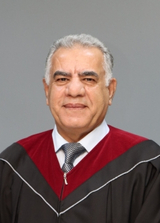

.jpg)
.jpg)

